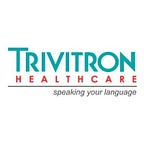Beyond Lead Aprons: Innovative Radiation Protection Products for the Modern Healthcare Facility
In the realm of healthcare, where the well-being of both patients and medical professionals is paramount, safeguarding against the harmful effects of radiation exposure is an essential yet ever-evolving pursuit. While the traditional lead apron has long served as a mainstay in radiation protection, advancements in technology and material science have paved the way for a new generation of innovative products that offer enhanced safety, comfort, and functionality.
The Limitations of Lead Aprons
Lead aprons, while effective in shielding against ionizing radiation, come with inherent drawbacks. Their significant weight can lead to musculoskeletal strain and fatigue, particularly during prolonged procedures. Additionally, their inflexibility can restrict movement and hinder dexterity, potentially compromising procedural efficiency. Furthermore, the environmental impact of lead disposal necessitates responsible management, adding another layer of complexity.
Embracing Innovation: A Spectrum of Radiation Protection Solutions
Fortunately, the healthcare industry is no longer tethered to the limitations of lead. A diverse array of cutting-edge radiation protection products has emerged, offering tailored solutions to address the specific needs of various medical settings and procedures.
1. Lighter-Weight, High-Performance Materials:
Composite materials like bismuth-based alloys and rare earth elements are revolutionizing apron design. These materials offer comparable or even superior radiation attenuation to lead while significantly reducing weight, translating to improved comfort and mobility for medical personnel.
2. Targeted Shielding for Enhanced Dexterity:
Gone are the days of bulky, all-encompassing lead aprons. Modern radiation protection garments incorporate targeted shielding, strategically placed to protect critical areas while maximizing dexterity in the arms and shoulders. This design philosophy empowers medical professionals to perform intricate procedures with greater ease and precision.
3. Radiation Dosimetry for Personalized Protection:
Individualized radiation exposure monitoring is crucial for optimizing safety and ensuring compliance with regulatory guidelines. Electronic dosimeters, worn by medical personnel, provide real-time data on radiation exposure, allowing for informed decision-making and personalized protection strategies.
4. Lead-Free Alternatives for Specialized Applications:
For specific procedures or imaging modalities, lead-free alternatives like thyroid shields, drape shields, and gonadal shields offer targeted protection without the drawbacks of lead. These specialized solutions cater to the unique requirements of diverse medical interventions.
Trivitron Healthcare: A Committed Partner in Radiation Safety
Trivitron Healthcare recognizes the significance of innovation in radiation protection. We are committed to providing our customers with a comprehensive portfolio of cutting-edge radiation protection products, including:
Lightweight, high-performance aprons: Crafted from advanced materials like bismuth-based alloys, our aprons offer exceptional protection while minimizing weight and maximizing comfort.
Targeted shielding garments: Designed to shield critical areas while ensuring optimal arm and shoulder mobility, our targeted shielding garments empower medical professionals to perform procedures with greater ease and control.
Electronic dosimeters: We offer a range of electronic dosimeters that provide real-time data on radiation exposure, enabling informed decision-making and personalized protection strategies.
Lead-free alternatives: Our portfolio includes a variety of lead-free shielding solutions for specialized applications, ensuring targeted protection where needed.
By embracing innovation and partnering with trusted providers like Trivitron Healthcare, healthcare facilities can create a safer working environment for their staff while optimizing patient care and procedural efficiency. As technology continues to evolve, the future of radiation protection promises even more advanced and user-friendly solutions, ensuring the well-being of both patients and medical professionals in the years to come.
